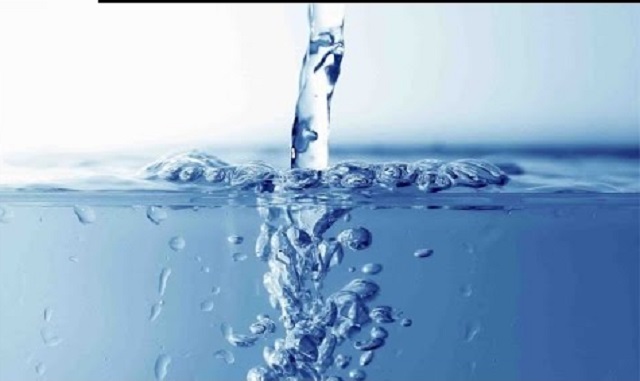Ambient water quality monitoring

What is water quality?
WATER quality refers to the chemical, physical and biological characteristics of water.
It is a measure of the condition of water relative to the requirements of living organisms and human needs.
It is most frequently used by reference to a set of standards against which compliance can be assessed.
Ambient Water Quality (AWQ) monitoring seeks to make a measurement of the pristine conditions of water bodies.
The term ambient refers to the immediate, undisturbed surroundings of the environment.
Role of EMA in water quality
The Environmental Management Agency maintains an extensive surface water quality monitoring network along major and minor water bodies across the country, which includes streams (rivers), dams and lakes.
There are seven water catchments in Zimbabwe namely Runde, Sanyati, Manyame, Gwai, Mzingwane, Save and Mazowe. Currently, a total of 346 active AWQ monitoring points are distributed within the seven catchments and these are monitored on a monthly basis under a monitoring programme which involves the collection of water samples, on site water quality tests and laboratory analytical tests.
An ambient monitoring exercise measures concentrations of various chemical water quality parameters which include biological oxygen demand (BOD), chemical oxygen demand (COD), dissolved oxygen (DO), pH, nitrates and phosphates.
These parameters provide essential information on the state of a water body. They are also used to assess the level of water contamination or pollution and its fitness for the various purposes such as drinking, recreation, irrigation and aquatic life support.
Ambient water quality monitoring assesses the impact of human activities within a catchment area.
These activities vary from manufacturing, mining, construction, runoff from agricultural activities, urban runoff to the discharge of treated and untreated sewage into water bodies. Information generated from ambient water quality monitoring is crucial for water resource management, planning and decision making.
What is the importance of AWQ monitoring?
It characterises water and identifies changes or trends in water quality over time;
Identifies specific existing or emerging water quality problems;
It gathers information for the design of specific pollution prevention or remediation programs;
It determines if compliance with pollution regulation is being met or if implementation of effective pollution control action is needed;
Water quality information is important for public safety, environmental protection, and economic growth.
EMA’s role in waste and effluent discharge
Water and effluent discharge monitoring falls in line with the Agency’s mission to regulate, monitor and promote sustainable management of natural resources and protect the environment. Water is an essential resource for life and good health. The Agency is always monitoring water quality and penalising offenders in line with environmental legislation. Since 2010, 664 orders have been issued to stop various municipalities from discharging raw effluent into water bodies.
The Environment Management Board has called various municipal authorities to answer to charges of discharging untreated sewage into water bodies namely, Chinhoyi, Chegutu, Harare, Chitungwiza and Norton whilst the judiciary has handled ten cases of the discharge of raw sewage into water bodies by municipalities.
Of these only four were finalised with the polluters penalised and ordered to stop discharging raw sewage into the environment.
The health consequences arising from water pollution impede development hence the need for all of us to be part of efforts to conserve and protect the resource.
In Zimbabwe polluted water sources led to the death of over 4 000 from cholera and left over 100 000 people sick with diarrhoeal diseases.
Waste and effluent legislation
The Environmental Management Act (Chapter 20:27) and Statutory Instrument 6 of 2007 Environmental Management (Effluent and Solid Waste Disposal) Regulations govern effluent discharge in Zimbabwe.
The Act defines effluent as “waste water or other fluid originating from domestic, agricultural and industrial activity, whether treated or untreated and whether discharged directly or indirectly into the environment,” and compels all operators who discharge effluent into the environment to:
Provide the Environment Management Board with accurate information on the quantity and quality of the discharge;
Discharge effluent or other pollutants originating from trade or industrial undertaking only into an existing sewerage system;
Get an effluent discharge licence issued by the Agency and pay a prescribed fee for such discharge;
Install an appropriate plant for the treatment of effluent before it is discharged into the environment.
Classes of effluent discharge licences
The Agency is guided by the licence classification criteria contained in the Third Schedule of Statutory Instrument 6 of 2007 Environmental Management (Effluent and Solid Waste Disposal) Regulations, in issuing the effluent discharge licences and testing the parameters of the discharge as outlined in the Fourth Schedule of the Statutory Instrument .
The licences are classified as follows:
A blue licence in respect of a disposal which is considered to be environmentally safe;
A green licence in respect of a disposal that is considered to present a low environmental hazard;
A yellow licence in respect of a disposal; which is considered to present a medium environmental hazard; and
A red licence in respect of a disposal that is considered to present a high environmental hazard.
Impacts of effluent discharge into the environment
Eutrophication due to high levels of nitrates and phosphates;
Oxygen depletion in water bodies affecting aquatic life;
Drinking water costs sky rocket;
Bio-accumulation of heavy metals in organisms;
Spread of water borne diseases such as cholera and typhoid;
A decline in the water quality leading to health complications;
Reduced ecosystem services and the provision of fisheries.
Effluent monitoring activities
The Agency carries out various monitoring activities in line with its mandate of ensuring environmental protection which include the monitoring of:
Direct discharges from industries, agricultural and mining operations; it includes sewage treatment plants, settling ponds and septic tanks, mining discharges and agricultural waste such as the disposal of waste from piggery projects;
Ambient water monitoring which involves the collection of water samples from various ambient points countrywide for analysis by the EMA laboratory and;
Bio monitoring, which is the assessment of the ecological conditions of water bodies and their ability to sustain life. This involves examining the organisms that live in these water bodies.
Water quality monitoring helps the Agency to regulate the activities within a catchment. The ills that we do on land are mirrored in rivers and streams.









Comments